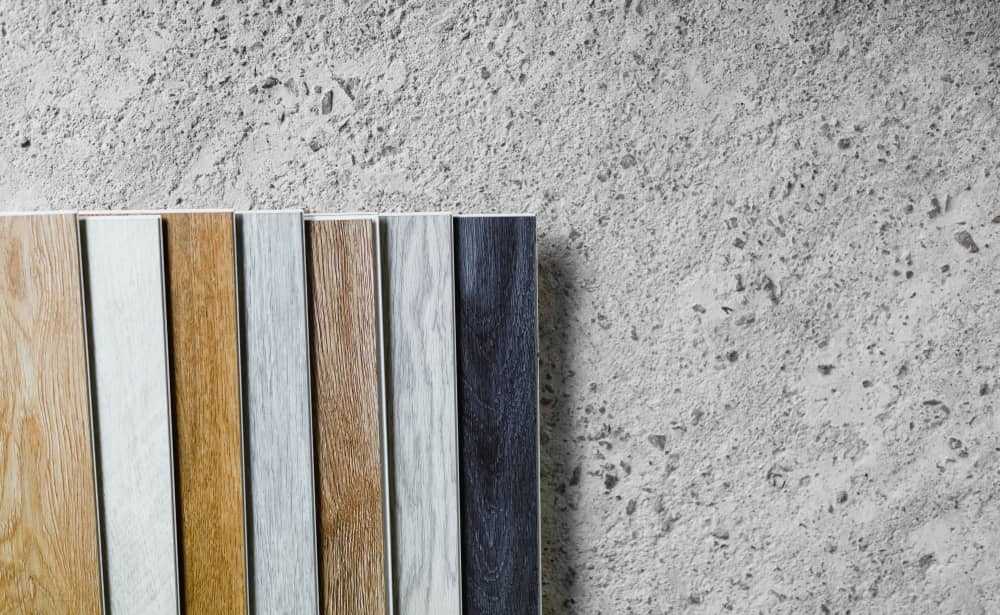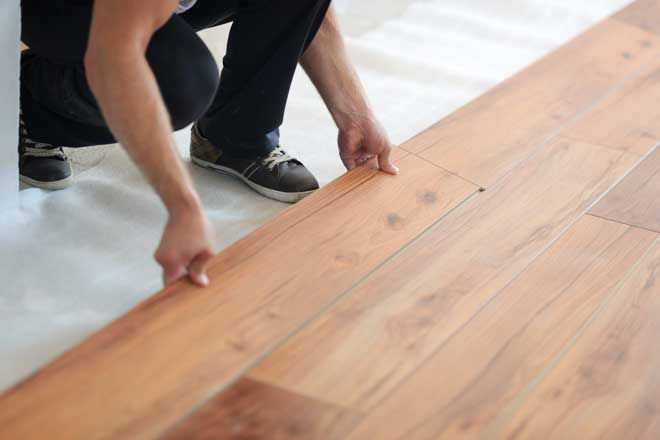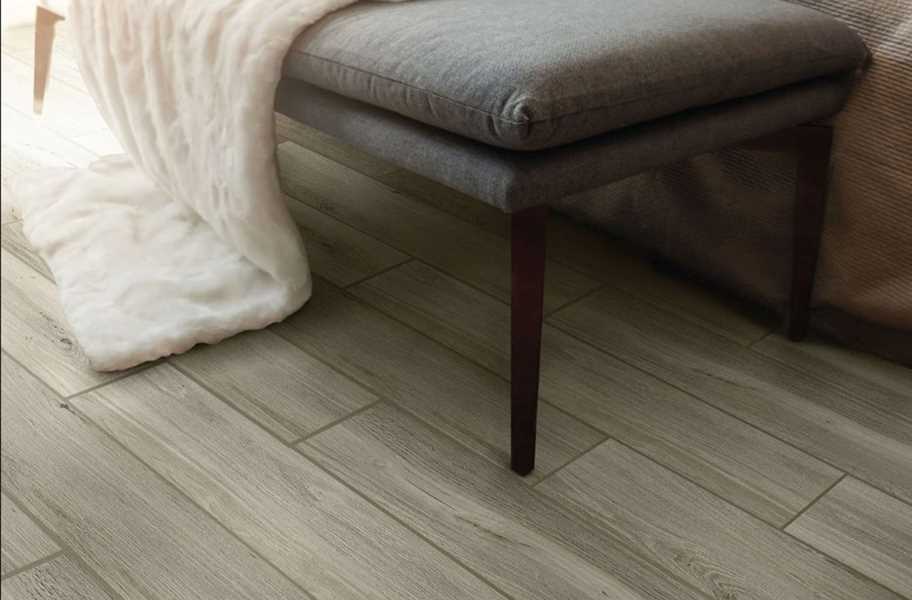Contents
Everything you need to know about floating floors | Complete guide

When it comes to choosing the perfect flooring for your home, there are many options to consider. From traditional tiles and wood to modern vinyl and laminate, the choices can be overwhelming. One popular option that offers both style and functionality is a floating floor.
A floating floor is a type of flooring installation that does not require nails or glue to secure it to the subfloor. Instead, the individual planks or tiles are joined together using a unique locking system. This allows the floor to “float” above the subfloor, providing a stable and durable surface.
One of the main advantages of a floating floor is its versatility. It can be installed over almost any type of existing floor, including concrete, plywood, and even existing tiles. This makes it an ideal choice for homeowners who want to update their flooring without the hassle of removing the old one.
Another benefit of a floating floor is its ease of installation. Unlike traditional flooring options that require professional help, a floating floor can often be installed by homeowners themselves. The planks or tiles simply click together, and an underlayment is usually used to provide additional cushioning and insulation.
Whether you choose laminate, vinyl, or wood, a floating floor is a cost-effective and stylish option for any home. Its easy installation, durability, and versatility make it a popular choice among homeowners and designers alike. So, if you’re looking to update your flooring, consider a floating floor for a hassle-free and beautiful result.
What are floating floors?

Floating floors refer to a type of flooring installation method that does not require the floor to be directly attached to the subfloor or underlayment. Instead, the flooring material is installed over an underlayment, which provides cushioning and sound absorption.
There are several types of flooring materials that can be used for floating floors, including vinyl, laminate, tiles, wood, and engineered wood. Each material has its own unique characteristics and benefits.
Vinyl floating floors are popular due to their durability, water resistance, and easy maintenance. They come in a wide range of styles and designs, mimicking the look of natural materials like hardwood or stone.
Laminate floating floors are made of composite wood materials and are known for their affordability and versatility. They can replicate the appearance of hardwood, tile, or stone, making them a popular choice for budget-conscious homeowners.
Tile floating floors are typically made of ceramic or porcelain and are known for their durability and moisture resistance. They are commonly used in bathrooms, kitchens, and other high-moisture areas.
Wood floating floors are made of real wood and provide a warm and natural look to any space. They can be sanded and refinished multiple times, making them a long-lasting option for homeowners.
Engineered wood floating floors are made of multiple layers of wood veneer and plywood, providing stability and moisture resistance. They offer the look of hardwood at a more affordable price point.
Overall, floating floors are a popular choice for homeowners due to their ease of installation, versatility, and ability to be installed over various types of subfloors. Whether you prefer the look of vinyl, laminate, tiles, wood, or engineered wood, there is a floating floor option available to suit your style and budget.
Definition and features

A floating floor refers to a type of flooring installation method where the floorboards are not directly attached to the subfloor, but rather “float” on top of it. This installation method is commonly used for laminate, vinyl, wood, engineered wood, and even tile floors.
One of the main features of a floating floor is that it is not fixed to the subfloor, which allows for easier installation and removal. The floorboards are typically installed with a click-and-lock or tongue-and-groove system, where each board is connected to the next without the need for glue or nails. This makes it a popular choice for DIY enthusiasts who want to install their own flooring.
Another feature of floating floors is their versatility. They can be installed on various types of subfloors, including concrete, plywood, or existing flooring. This makes them suitable for both new construction and renovation projects. Additionally, floating floors can be installed in any room of the house, including kitchens, bathrooms, and basements.
Floating floors also offer excellent stability and durability. The floorboards are designed to interlock tightly, creating a strong and stable surface. This helps to prevent shifting, buckling, or warping over time. Moreover, many floating floors are resistant to moisture, stains, and scratches, making them suitable for high-traffic areas.
One of the key advantages of floating floors is their ease of maintenance. They can be easily cleaned with a broom, vacuum, or damp mop. In case of damage or wear, individual floorboards can be replaced without the need to remove the entire floor. This makes it a cost-effective and practical choice for homeowners.
In summary, floating floors are a versatile and practical choice for flooring installation. They offer easy installation, durability, and low maintenance, making them a popular option for homeowners and DIY enthusiasts.
Benefits of floating floors

- Floating floors are a popular choice for homeowners due to their versatility and ease of installation.
- Laminate, engineered wood, vinyl, and tile are all types of flooring that can be installed as floating floors.
- One of the main benefits of floating floors is that they can be installed over existing flooring, saving time and money on removal and disposal.
- Unlike traditional flooring, floating floors are not attached to the subfloor, which allows for expansion and contraction with changes in temperature and humidity.
- This flexibility helps to prevent warping and buckling of the floor over time.
- Floating floors are also easier to repair and replace compared to traditional flooring.
- If a portion of the floor becomes damaged, it can be easily removed and replaced without disturbing the rest of the floor.
- Additionally, floating floors can be installed in a variety of spaces, including basements and concrete slabs, where traditional flooring may not be suitable.
- The installation process for floating floors is generally faster and less labor-intensive than other types of flooring.
- Overall, the benefits of floating floors make them a popular choice for homeowners looking for a durable, versatile, and cost-effective flooring option.
Types of floating floors

There are several types of floating floors available on the market today. Each type has its own unique characteristics and advantages. Here are some of the most popular types:
- Vinyl flooring: Vinyl floating floors are easy to install and maintain. They come in a variety of colors and patterns, making them a versatile choice for any room in your home. Vinyl floors are also water-resistant, making them ideal for areas prone to moisture, such as bathrooms and kitchens.
- Laminate flooring: Laminate floating floors are made of composite wood materials and are designed to mimic the look of real wood. They are affordable, durable, and easy to install. Laminate floors are also resistant to scratches and stains, making them a popular choice for high-traffic areas.
- Engineered wood flooring: Engineered wood floating floors are made of multiple layers of wood veneer, with a top layer of hardwood. They are more stable and resistant to moisture than solid wood floors, making them suitable for areas with fluctuating humidity levels. Engineered wood floors can be sanded and refinished multiple times, extending their lifespan.
- Cork flooring: Cork floating floors are made from the bark of cork trees. They are soft, comfortable to walk on, and provide excellent insulation. Cork floors are also hypoallergenic and resistant to mold and mildew, making them a healthy choice for allergy sufferers.
- Bamboo flooring: Bamboo floating floors are made from bamboo grass, which is a sustainable and renewable resource. They are durable, moisture-resistant, and come in a variety of colors and styles. Bamboo floors are also easy to maintain and can add a touch of elegance to any room.
When installing a floating floor, it is important to use the appropriate underlayment to provide cushioning and sound insulation. The type of underlayment will depend on the type of floor you choose and the specific requirements of your space.
Video:Everything you need to know about floating floors | Complete guide
Laminate vs Luxury Vinyl Plank Flooring | Everything you need to know!
The complete guide to Slider float and float ledgering
Hello, I am Beverly J. Sanders, the voice behind the diverse articles you come across on styves.co.za. My passion lies in exploring the nuances of home improvement and sharing tips that can help you transform your living space into a haven of comfort and style. From the latest trends in home decor to practical cleaning advice, I cover a broad spectrum of topics to cater to a wide variety of interests.
In my recent works, I have delved into the advantages of incorporating a horizontal Murphy bed into your home to save space without compromising on design and functionality. I also explored the benefits of having a free-standing electric fireplace that not only adds warmth to your home but also brings a sleek and modern design to any living space. My articles are a rich resource, offering insights into different products and home improvement strategies that can enhance the quality of your life.
I believe in the power of details; a belief that reflects in my comprehensive guides where I discuss even the overlooked aspects of home decor, such as the impact of baseboard trim in enhancing the overall look and feel of your home. I am constantly on the lookout for innovative solutions and products that can add value to your home and life.
Join me in my exploration as I continue to bring you the latest trends, tips, and insights in the home improvement world. Let’s create a home that is not just a place to live, but a reflection of style and personality.